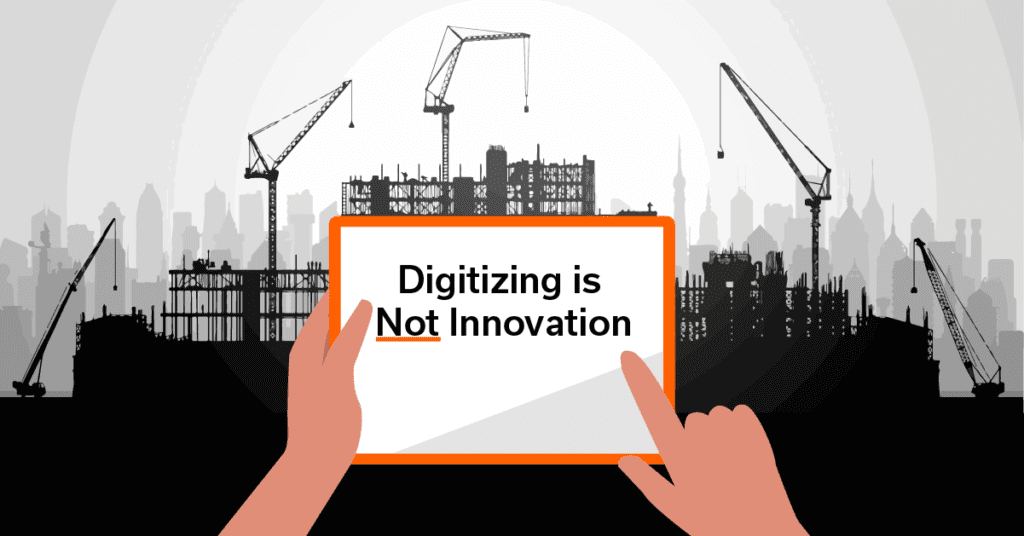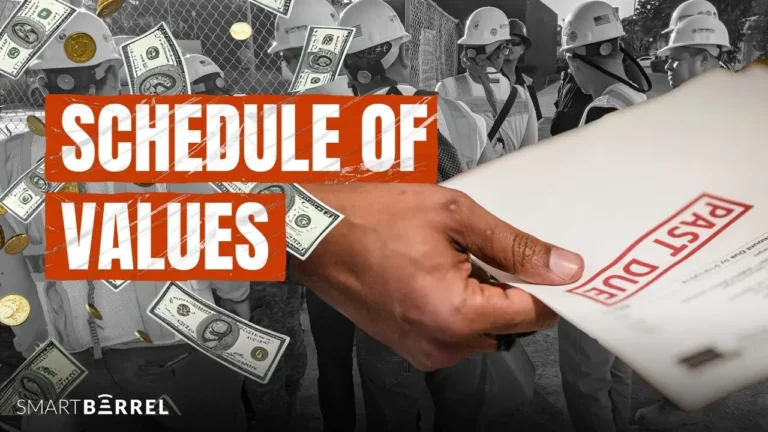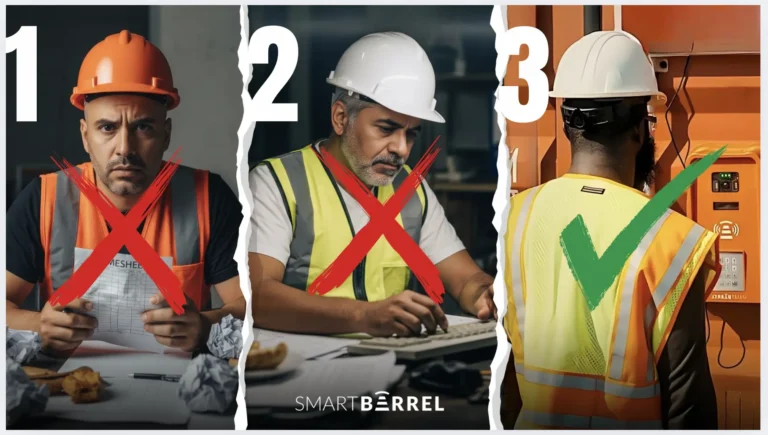Famous English author and satirist Terry Pratchett quipped, ““If you do not know where you come from, then you don’t know where you are, and if you don’t know where you are, then you don’t know where you’re going. And if you don’t know where you’re going, you’re probably going wrong.”
Ole Terry nailed Continuous Improvement using the comprehension level of a 3rd grader to speak something that is both relevant, and profound, in today’s construction economy.
Let’s take a look at several keys to continuous improvement on the jobsite for construction project managers and site executives to consider.
What is Continuous Improvement in Construction?
Continuous improvement is deeply rooted in lean process manufacturing that has been exhausted and refined over the years, but definitely has a place in Construction. The basic tenet of continuous improvement is documenting processes so they become repeatable. Without documentation, it is impossible to achieve improvement, similar to setting a control in a science experiment and seeing how variables affect the result.
One of the best ways to document processes is through a technique called value stream mapping. VSM is a visual mapping of your process that includes every action and reaction at each step in a particular process.
Lucidchart provides a more in depth overview of how to create a process map, but suffice it to say, process maps can be created for headcount tracking, onboarding, visual safety inspections, timesheets, and many more construction labor processes.
Once construction processes are well defined, we can leverage both technology and automation to help forge the path of continuous improvement.
Importance of Continuous Improvement in Construction
The benefits of continuous improvement in construction aren’t just related to staying ahead of the competition. Some of the core reasons why you should implement the improvement approaches are:
- Enhanced Quality: Consistent improvements lead to higher quality standards in construction projects, which helps you meet the client’s expectations.
- Increased Efficiency: Implementing continuous improvement practices helps streamline construction processes, reduce waste, and optimize resource use.
- Cost Savings: By identifying inefficiencies, construction companies can reduce costs associated with materials, labor, and time.
- Safety Improvements: This approach involves identifying and mitigating potential hazards, which leads to reducing the risk of accidents.
- Customer Satisfaction: Delivering high-quality projects on time increases client satisfaction and enhances the company’s reputation.
- Adaptability to Change: Adopting principles of continuous improvement allows companies to respond to changes in market demands and technology.
- Innovation: Encouraging ongoing improvements leads to the adoption of new technologies and methods that improve project outcomes.
- Employee Engagement and Morale: Involving employees in the continuous improvement process can make them feel valued and increase engagement rates.
- Sustainability: Dedication to improvement can lead to more sustainable construction practices, such as reducing waste, improving energy efficiency, and using environmentally friendly materials.
- Regulatory Compliance: Regularly updating and improving practices ensures compliance with evolving regulations and standards.
- Project Predictability: Improved processes improve project management, which usually leads to more predictable outcomes in terms of timeframes and budgets.
- Knowledge Sharing: Establishing a culture of continual improvement encourages knowledge sharing within the organization, which leads to overall growth and development.
The number and extent of benefits depend on the approach taken by each company in the construction industry as well as its dedication to the continuous process.
Key Challenges of Continuous Improvement in Construction
While adopting the principles of continuous improvement in construction can be highly beneficial, the process comes with a number of challenges.
Resistance to Change
Many construction workers have been using traditional methods for decades. They could resist adopting new processes and technologies. To overcome this challenge, you would have to streamline communications and help the team see the multiple benefits of the new approach.
Fragmented Industry:
Construction projects often include numerous stakeholders, such as contractors, subcontractors, suppliers, and clients. Coordinating continuous improvement efforts across these diverse groups can be challenging.
To overcome this challenge, you have to implement robust planning. Your team must include members with a deep understanding of the continuous improvement process.
High Initial Costs
Implementing new technologies and training programs often requires significant upfront investment. This could be an issue for smaller firms.
To overcome this challenge, you may have to start small. Not all continuous improvement processes require a high budget. Instead of trying to cover all bases at once, consider starting with the most important steps.
Lack of Standardization
The construction industry tends to lack standardized processes and practices. This makes it difficult to apply continuous improvement across different projects at the same time.
Again, to overcome this challenge, you would have to invest significant time in seamless planning.
Digitization is Not Innovation
Digitization of today’s construction processes should not be confused with innovation. It is ultra-important to digitize, but unless a process is fully mapped and understood, it cannot be innovated properly.
However, digitization could be an important step toward continuous improvement. As Pratchett painted the picture, “if you do not know where you come from, you do not know where you are”.
Digitization is an absolutely monstrous opportunity for construction executives to understand where the project began, and where it is today so they can properly plan what happens tomorrow. With an average cost of 40% spent on labor, and over 50% spent on materials for many construction projects, these two categories represent the largest opportunities to see significant gains through digitization.
A great first step to digitization begins with process mapping as we’ve already discussed. Once process are properly mapped out, innovation is much easier to achieve. An example of digitization is a move from collecting employee time cards via pen and paper, to having employees log their time into an Excel timesheet template. This level of digitization is a good step toward more accurate, auditable, and easier to enter timekeeping, but it is not innovative.
An example of innovation in timekeeping would be to automate timekeeping completely by capturing employee punches using a device, and automatically updating payroll records with accurate punch details, cost codes, and other pertinent information. This level of innovation would allow for a construction business to change how it operates, minimize human error and administration, and focus on the business of building.
How to Optimize Construction Labor Costs
Consider all the aspects of your onsite workforce. You have direct employees, hourly temp workers, subcontractors, maybe even hourly security guards.
Today you probably rely on paper timesheets for your hourly workers, labor for hire, and security guards.
Every paper timesheet, headcount and daily log represents an opportunity to digitize so you are able to innovate and automate. Consider what those processes are today. Project managers likely have to verify all time records, request clarification, compare billings to documented hours, parlay with payroll and potentially execute dozens of other steps.
What if there was a much easier way to digitize the processes involved with managing your onsite workforce? Taking that step toward digitization will allow you as a project manager to both innovate and automate repeatable processes, develop audit trails, historical data views and extract invaluable insights and analytics from current and past projects to improve future profitability.
About SmartBarrel
SmartBarrel is a platform that is purpose built for not only project managers and superintendents, but for construction executives and accountants to accurately and more easily manage their onsite workforce making their projects more profitable. SmartBarrel handles and automates 96% of the administrative tasks associated with managing a construction workforce, regardless if the people on your site are direct employees, hourly labor for hire, or subcontractors.
Take the first step toward innovation and talk to SmartBarrel about how we can 1. digitize and 2. automate your workforce management so you can focus on moving your projects forward while increasing your margins and staying on time and budget on your projects!






